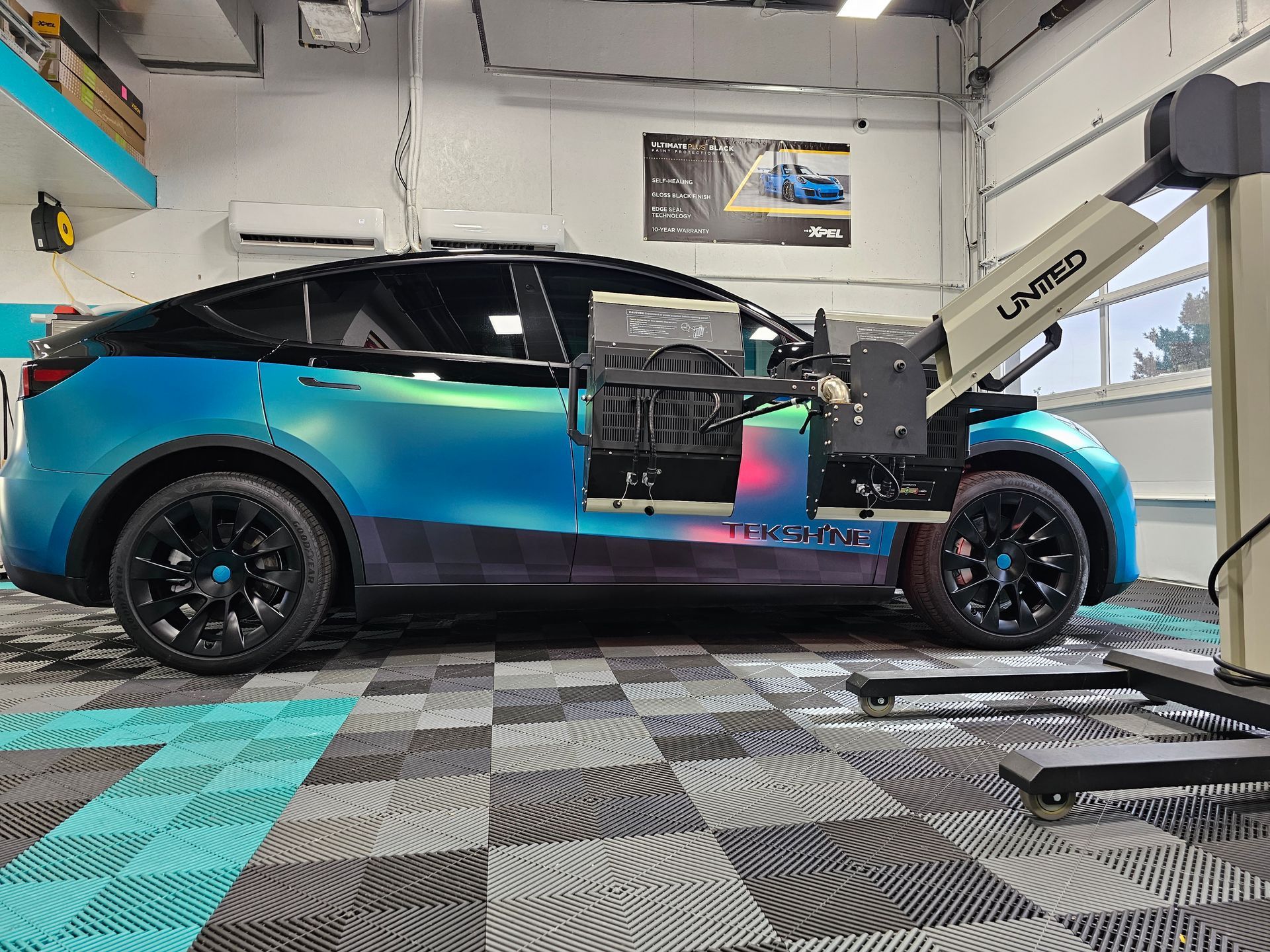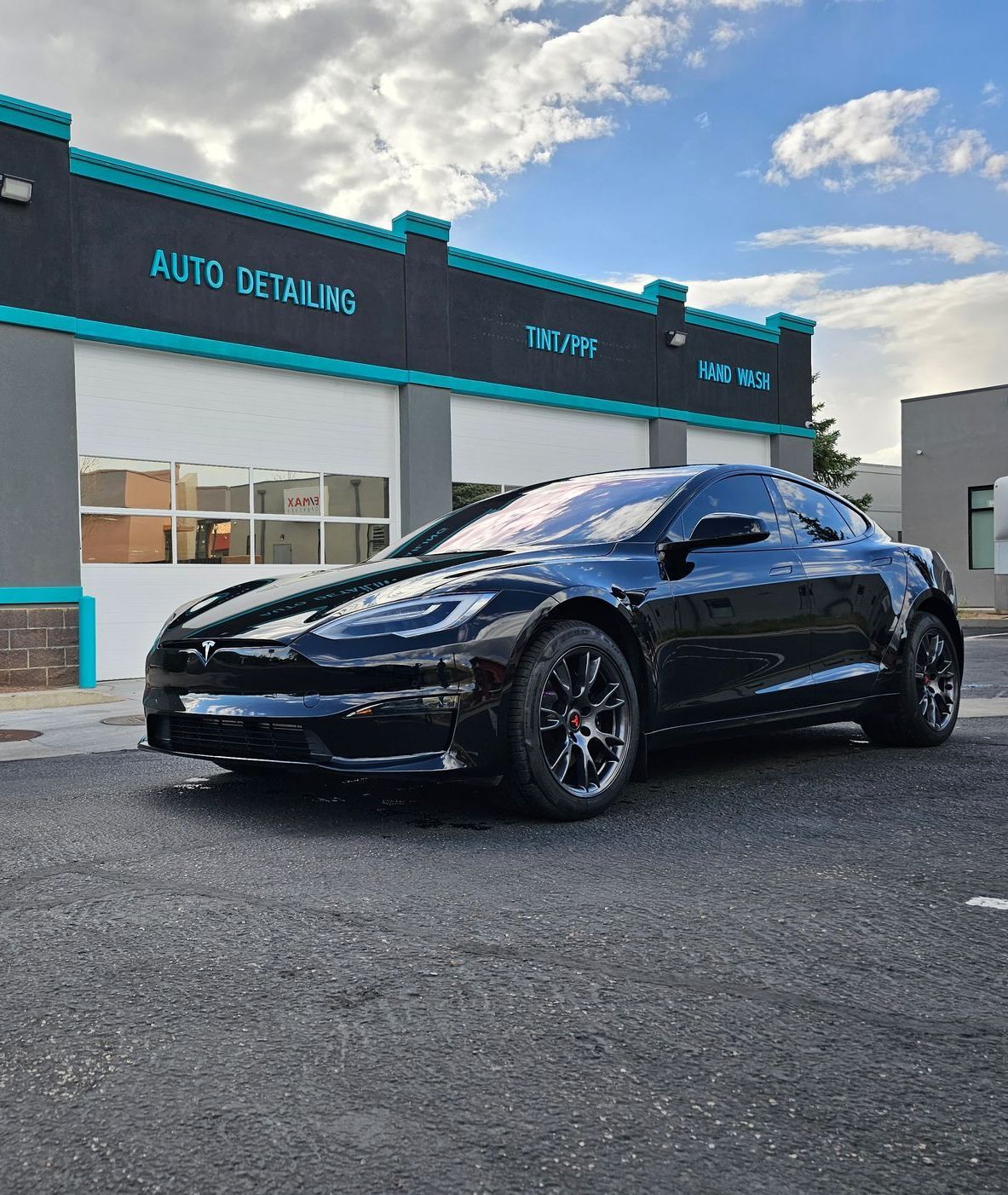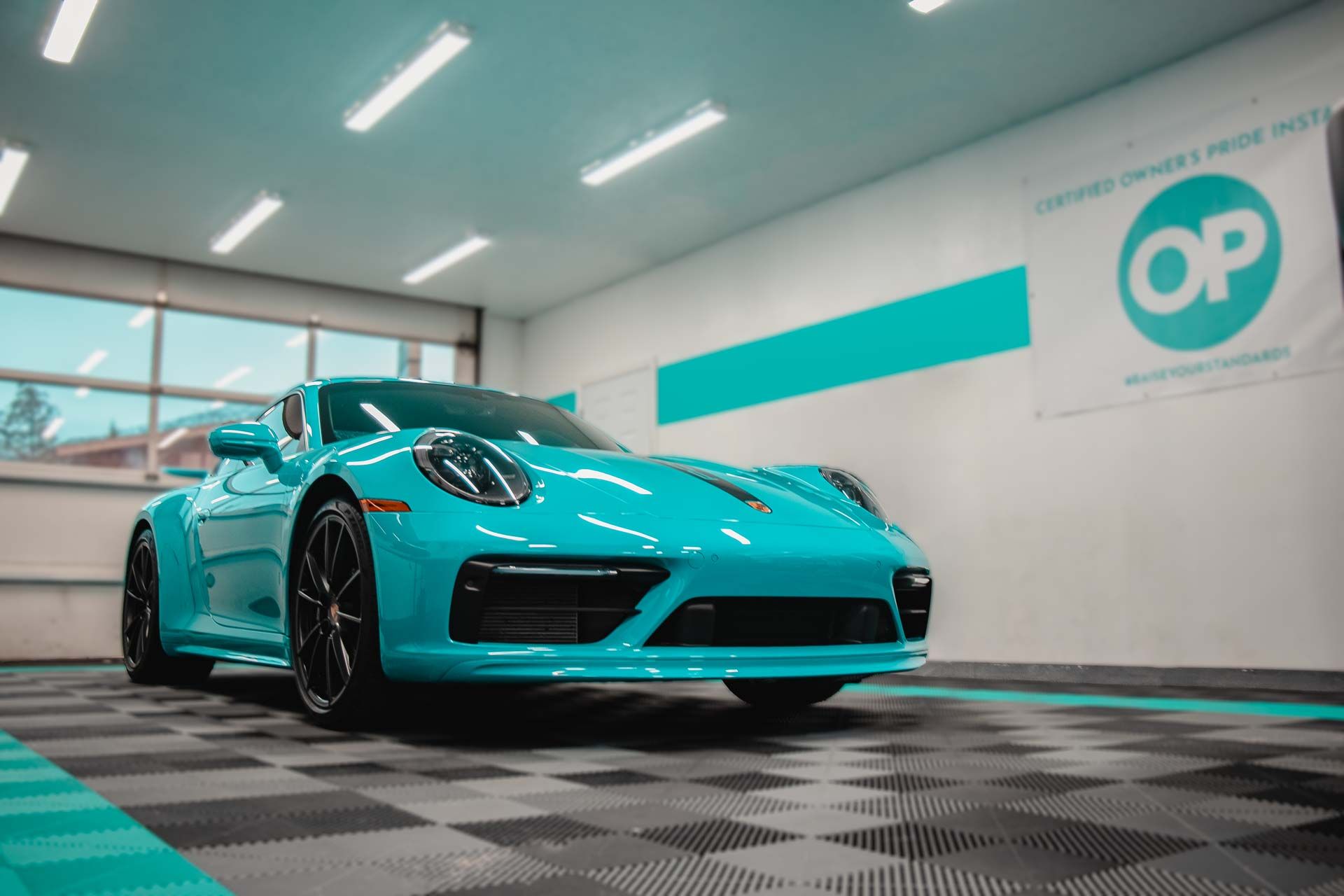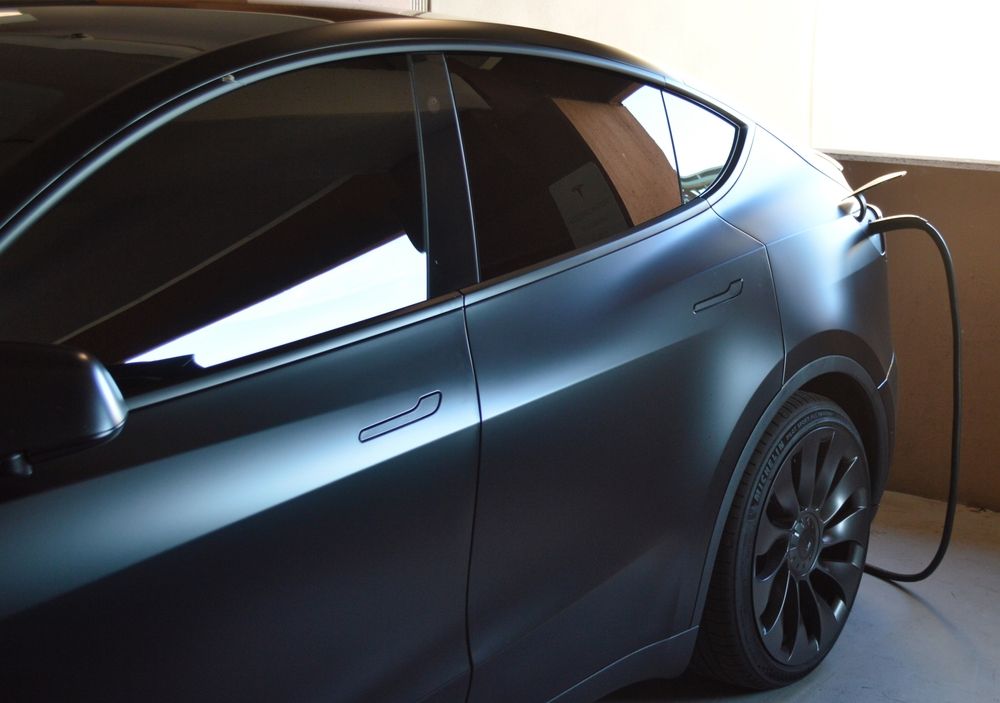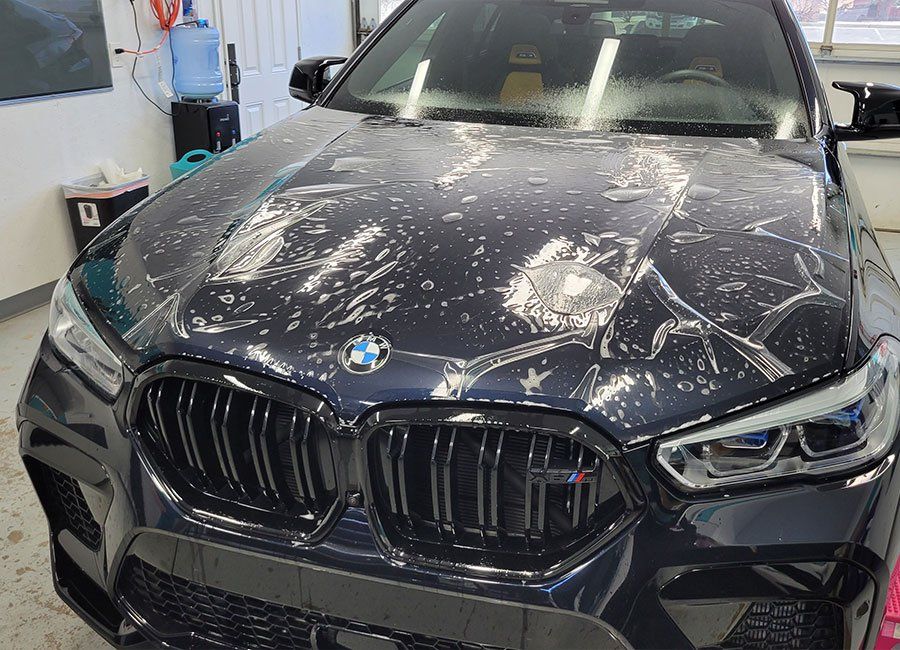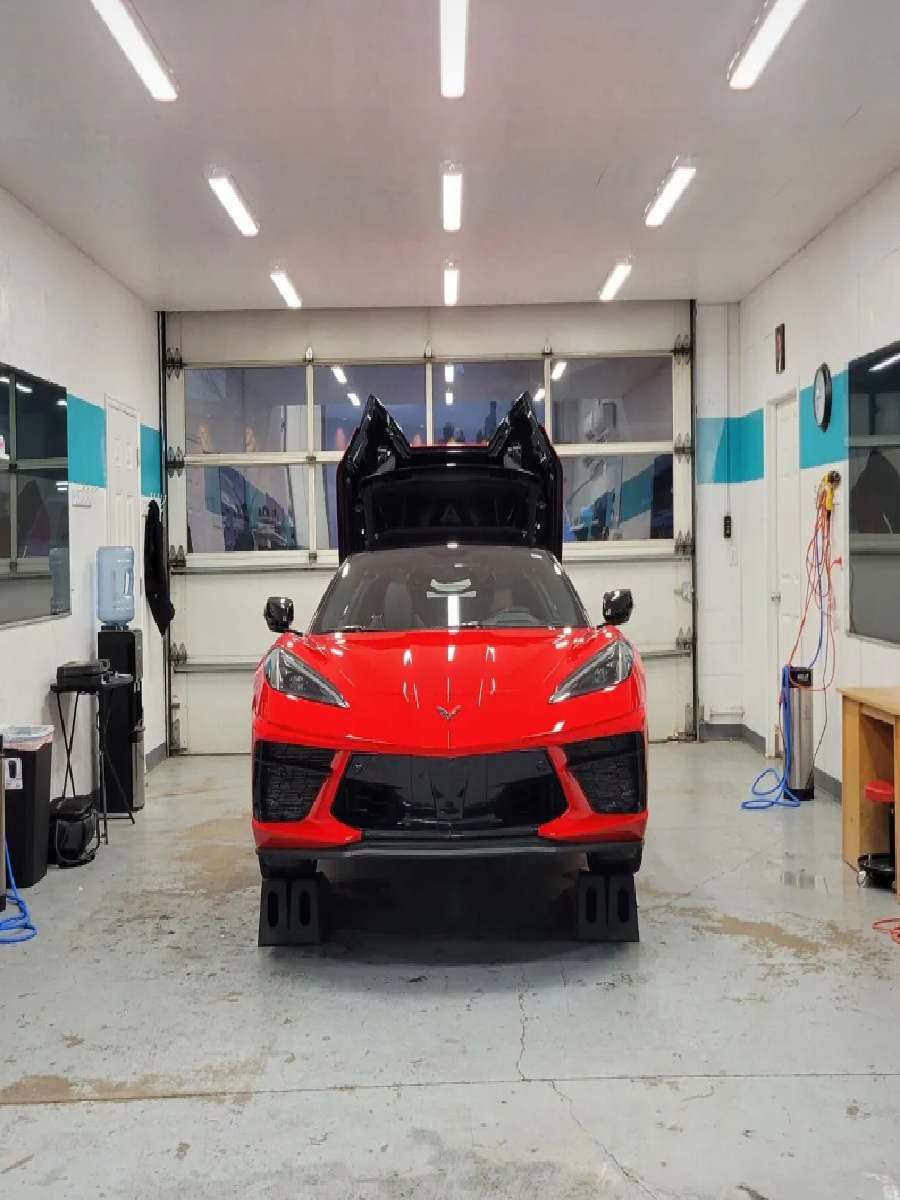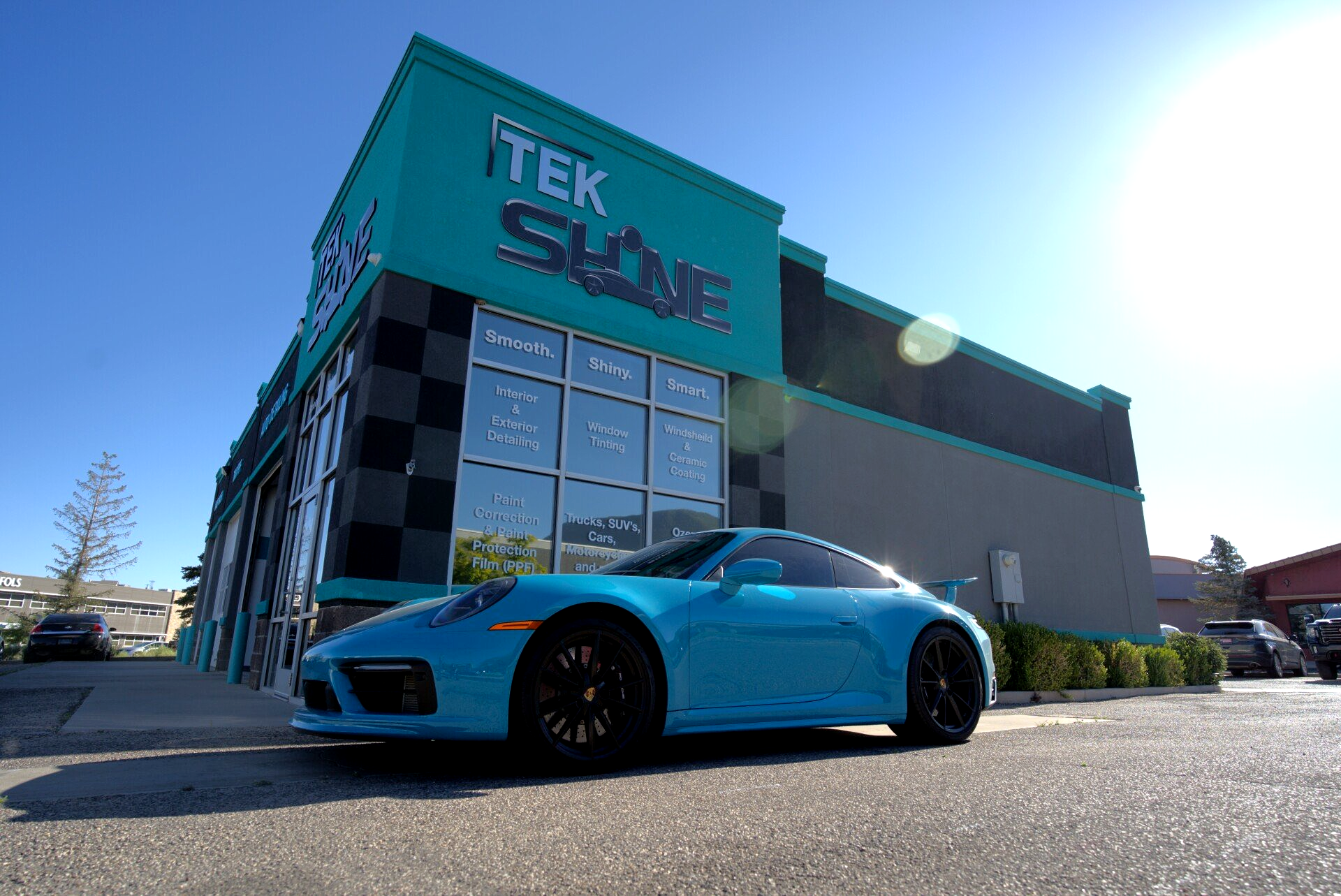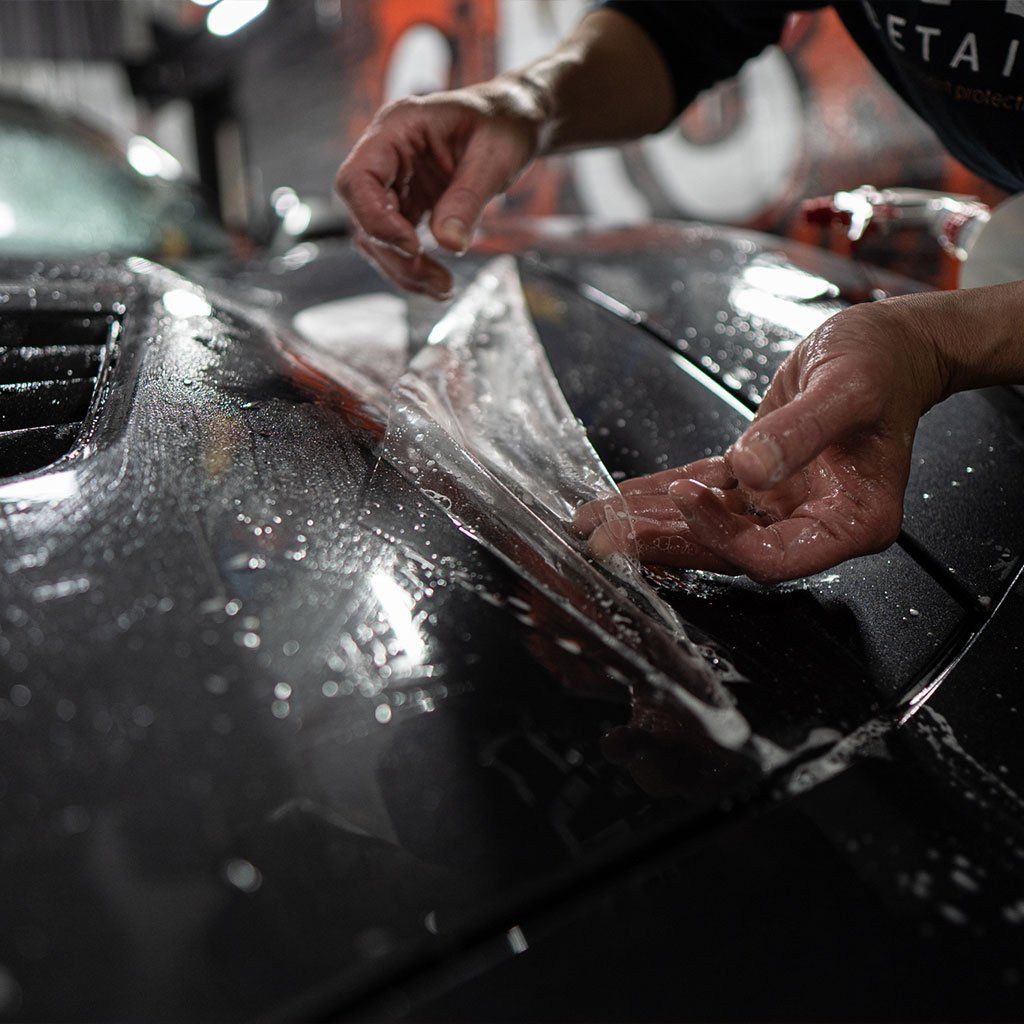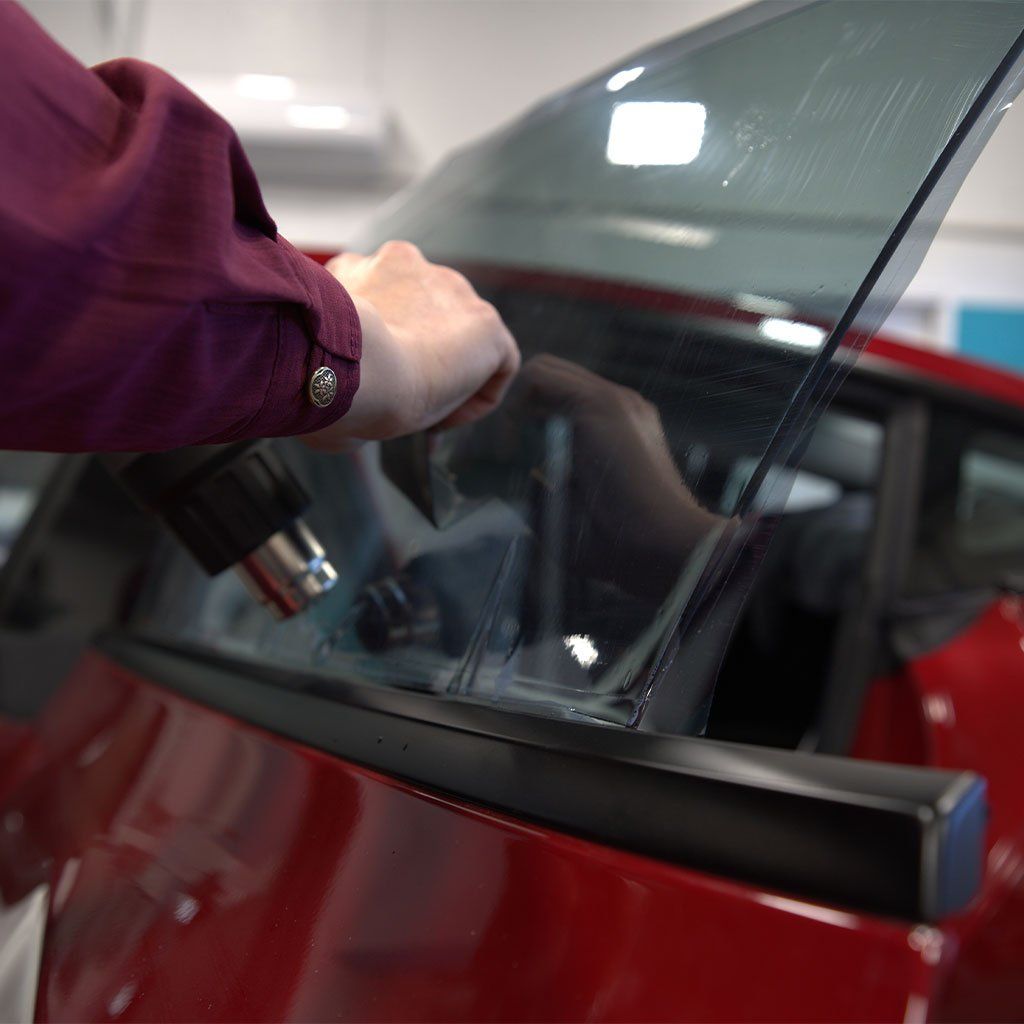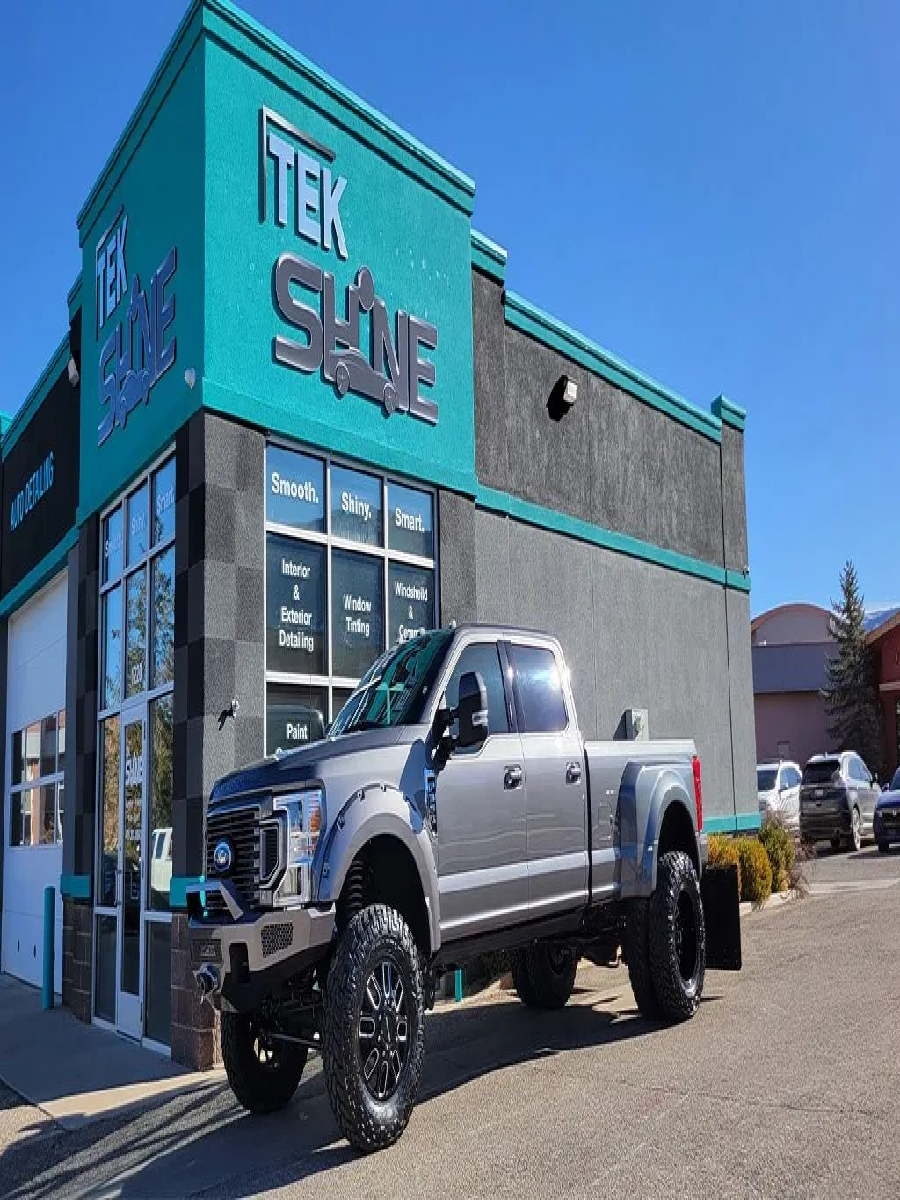PPF: The Best Shield Against Everyday Car Damage and Protection
CALL (435) 383-8663
When it comes to keeping your car looking brand new, many drivers wonder what the best protection option is. Paint Protection Film (PPF) has become a transformative solution for both car enthusiasts and regular owners, offering a dependable shield against scratches, chips, and the sun's damaging rays. Unlike traditional waxes or sealants that need constant reapplication, PPF acts like an invisible shield, ensuring your vehicle maintains its shine and resale value with minimal effort. Imagine hitting the road without worrying about every pebble or bug that could leave a mark—that’s the freedom PPF offers! In this article, we'll dive into what makes PPF such a smart investment for your car’s long-term health and beauty.
Paint Protection Film (PPF) is a clear, durable film applied to a vehicle's surface that protects against scratches, chips, and environmental hazards like UV rays. It serves as an ultimate shield by not only absorbing impacts to maintain the vehicle's appearance but also offering long-lasting protection that can enhance resale value and reduce maintenance efforts over time.
PPF: What Is Paint Protection Film?
PPF, or Paint Protection Film, is a clear, thermoplastic urethane material that acts as an invisible shield for vehicles. It is specifically designed to protect against scratches, chips, and other damaging elements. This sturdy film preserves the aesthetics of your car's paint job while providing a strong defense against everyday hazards like road debris and UV exposure. Imagine taking a multi-day road trip; just as you’d choose to wear comfortable clothes that protect your skin from the sun, your car deserves a protective layer to combat nature’s elements.
The functionality behind PPF lies in its construction, which involves several layers, each serving a critical purpose.
At the base is the adhesive layer, which firmly sticks the film to your vehicle's surface, ensuring it remains in place even under duress.
Next comes the polyurethane core—the real powerhouse that absorbs impacts from small rocks and debris while allowing flexibility for movement.
Finally, we have the top coat, a durable finish resistant to UV rays and environmental contaminants.
It’s like placing specialized armor over your paint that doesn’t merely blanket but actively safeguards your investment.
One of the most remarkable features of modern PPF is its self-healing properties. When exposed to heat from sunlight or warm water, minor scratches can vanish before your eyes. Instead of worrying about every scratch that your vehicle might endure daily, you can enjoy peace of mind knowing that light marks will self-correct over time. This sustainability aspect is particularly appealing; it reduces visible wear and tear and keeps maintenance down to a manageable level.
Additionally, high-quality PPF can provide up to 99% UV protection, preventing fading and oxidation of your vehicle's pristine paintwork. The preservation of exterior charm enhances not only the aesthetic appeal but also its resale value down the road. You wouldn’t want potential buyers turning away simply because your once-lustrous car looks worn from a few years on the road!
Understanding these features can significantly influence your decision when weighing the advantages of investing in this innovative protective layer for your vehicle.
Key Benefits for Vehicle Owners
One of the most significant advantages of investing in PPF is its ability to maintain resale value. Studies indicate that cars with unblemished paintwork can fetch resale prices up to 15% higher when compared to those showcasing visible damage or scratches. This consideration is essential for car owners who may eventually sell their vehicles. Keeping your car's exterior looking impeccable not only elevates its appearance but also enhances its market value.
Immediate and Long-Term Advantages
Examining how PPF achieves this protective feat, let's consider its remarkable self-healing properties. Modern PPF technology enables the film to repair minor scratches upon exposure to heat; whether it's the warmth of sunlight or the glow of an engine, these subtle scratches can fade away almost as if they never existed. Such features minimize the need for frequent touch-ups or refinishing, thereby drastically reducing maintenance efforts while extending the vehicle's aesthetic charm.
Another essential benefit is the UV protection that high-quality PPF provides. Poor UV exposure can result in faded paint over time, giving your once vibrant color a dull, worn appearance. However, a robust PPF can block up to 98% of harmful UV rays—keeping your vehicle's paint intact and vibrant much longer than untreated cars would endure. This feature is particularly crucial for individuals residing in sunny regions where sun damage can rapidly deteriorate.
Maintaining that fresh-off-the-lot look doesn’t just elevate your pride in ownership; it also allows you to enjoy your vehicle without anxiety about wear and tear. Car enthusiasts and everyday drivers alike appreciate how PPF simplifies their lives by ensuring their cars remain appealing with minimal hassle.
To enhance your skills further, consider exploring tutorials that provide additional insight into achieving optimal results during your application process.
Essential Maintenance Tips
While paint protection film (PPF) is impressively low-maintenance compared to other car care products, taking a few proactive steps can significantly prolong its life and effectiveness. Regular cleaning is the cornerstone of this care. By using a gentle, pH-neutral detergent specifically formulated for PPF, you not only keep your vehicle looking sharp but also prevent any chemical reactions that could harm the film. This means that when you're washing your car, instead of reaching for that all-purpose cleaner you have lying around, it's best to choose a product designed with PPF in mind.
Hand washing your vehicle is highly recommended over automated washes. Although those high-pressure machines seem convenient, they can be anything but gentle on your PPF. Instead, grab some soft microfiber mitts or towels. They will glide over your car's surface without scratching it, ensuring the protective layer remains intact and effective. Believe me, this minor alteration can significantly impact your car's appearance.
Avoid harsh chemical cleaners or abrasives. These may promise instant shine but can quickly degrade the film’s integrity over time. Imagine spending money on a great protective solution only to have it tarnished by-products that weren’t meant for the job. Kicking those harmful habits helps maintain the high-quality finish of your PPF.
Beyond regular maintenance, it’s crucial to act swiftly against environmental contaminants like bird droppings or tree sap. These substances are notorious for staining surfaces, and if left unattended, they can work their way into the film, resulting in discoloration and deterioration. A quick wipedown with a damp microfiber cloth immediately after you notice any splatters will save both your paint and peace of mind.
Lastly, always park your vehicle in shaded areas whenever possible. This will reduce prolonged UV exposure, helping to prevent any yellowing or fading of the film over time. Sunlight, while beautiful and warm, is one of the enemy forces against the vibrancy of colors on your car's surface. By implementing these simple yet effective practices regularly, you'll ensure that your paint protection film continues to operate at peak performance while keeping your vehicle looking stunning for years to come.
Taking these essential steps not only maintains the appearance of your vehicle but also extends your PPF's protective capabilities. This focus on preservation sets the stage for understanding how different methods stack up against each other in safeguarding your investment.
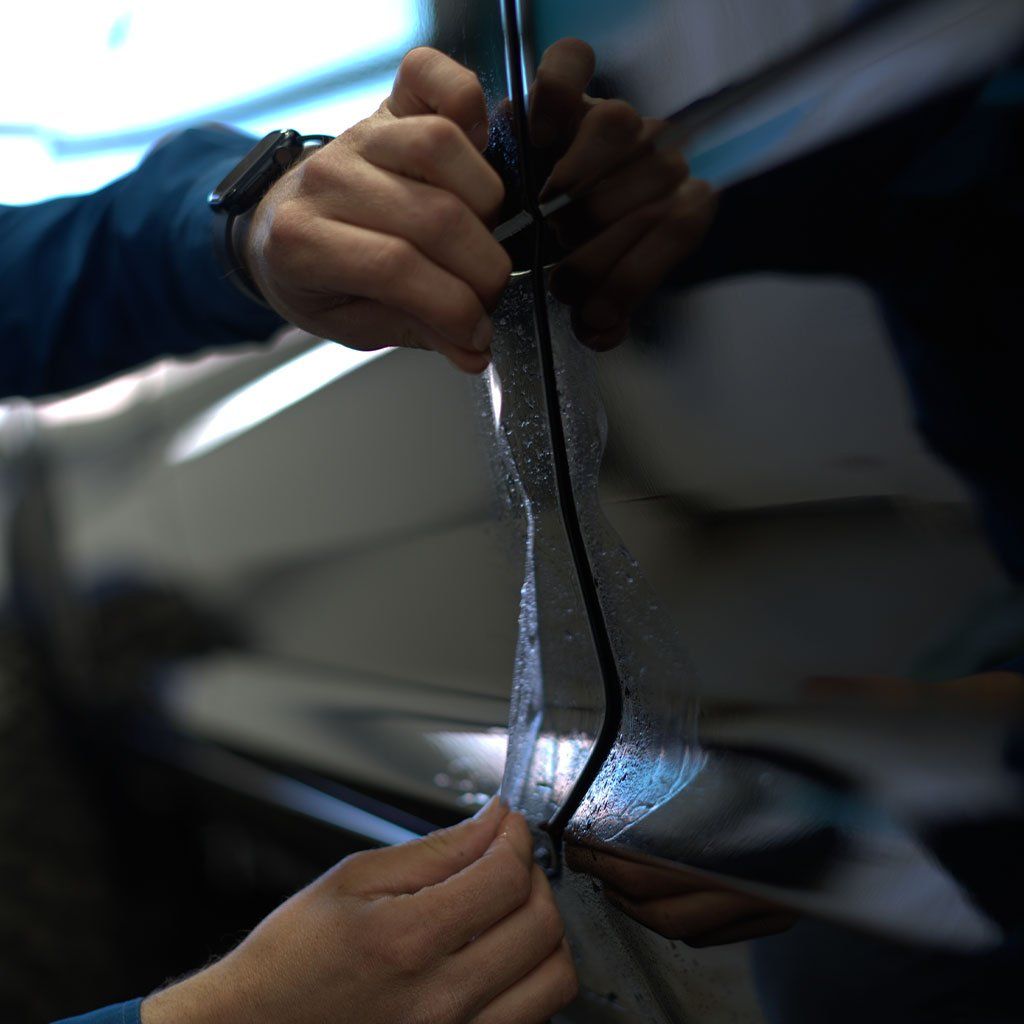
PPF vs. Other Protection Methods
Car owners often find themselves at a crossroads when deciding which protection option to choose for their vehicles. Despite the abundance of options, there are three primary types to consider: paint protection film (PPF), ceramic coatings, and traditional waxes. Each of these methods has its own set of strengths and weaknesses, but PPF stands out as a superior choice for those serious about safeguarding their investment.
Comparison
- PPF: What sets PPF apart is its ability to offer a physical barrier against various threats, including road debris, minor scratches, and UV damage. Thanks to the self-healing properties inherent in products like XPEL ULTIMATE PLUS, minor abrasions disappear when exposed to heat, enhancing both the longevity of the film and the aesthetics of your car.
- Ceramic Coatings: These provide a potent hydrophobic layer that repels water and dirt but fall short in impact resistance. Although they reduce surface contaminants and improve shine, they cannot absorb or deflect physical impacts such as stones hitting your vehicle.
- Waxes: While waxes enhance the shine and overall look of your paint, they require frequent reapplications—sometimes weekly—to maintain their protective qualities. Furthermore, their protective capacity is limited compared to PPF, as they do not guard against meaningful abrasions or UV rays effectively.
Consider this scenario: You’ve just finished applying a shiny ceramic coating your pride and joy. It repels water beautifully; however, on a drive through gravelly terrain, a stone gets kicked up. You notice an unfortunate chip that the ceramic coating couldn’t prevent. This emphasizes why many opt for PFF instead—it offers comprehensive coverage where it counts.
Given these comparisons, it becomes clear why many car enthusiasts are leaning towards paint protection film as their top choice in vehicle maintenance and aesthetic preservation. Think of it as armor for your car; while other options might provide mere cosmetic enhancement or limited protection, PPF serves as a strong line of defense for various driving conditions.
With clarity on how PPF measures up against other methods, the benefits of investing in this advanced form of protection become evident. Understanding its advantages further enhances the case for making this valuable addition to your vehicle care routine.
Why Invest in PPF?
Investing in Paint Protection Film (PPF) may appear to be a hefty upfront expense, but the benefits make it clear that this investment pays off over time. The assurance that your vehicle is protected from daily wear and tear is often invaluable. Instead of worrying about every scratch or chip, a layer of PPF allows you to drive freely, appreciating both the journey and the destination without constant concern for your car's appearance.
Long-Term Savings
The financial implications of neglecting proper car protection can be staggering. Consider the cumulative cost of frequent paint touch-ups over a few years—these costs can add up quickly, potentially surpassing that initial PPF investment. Moreover, neglect also leads to diminished resale value; vehicles without protective barriers tend to show wear sooner and more visibly, affecting how much you can recover at the point of sale.
Investing in PPF not only acts as a protective shield but also enhances the longevity of your car’s finish, resulting in savings down the line.
It may be surprising to learn that some estimates suggest cars with PPF retain up to 10-20% more value compared to their unprotected counterparts. This statistic alone makes a compelling case for investing in PPF as a long-term strategy.
Therefore, when considering all factors—from maintenance costs to potential resale value—it becomes clear that investing in PPF emerges as a worthy investment for discerning vehicle owners. Not only does it provide immediate aesthetic benefits but also promises long-lasting protection that keeps your car looking pristine for years.
For those who want to explore the protection options available through Paint Protection Film, don't hesitate to reach out. Call us at (435) 383-8663 or visit TekShine for assistance.


